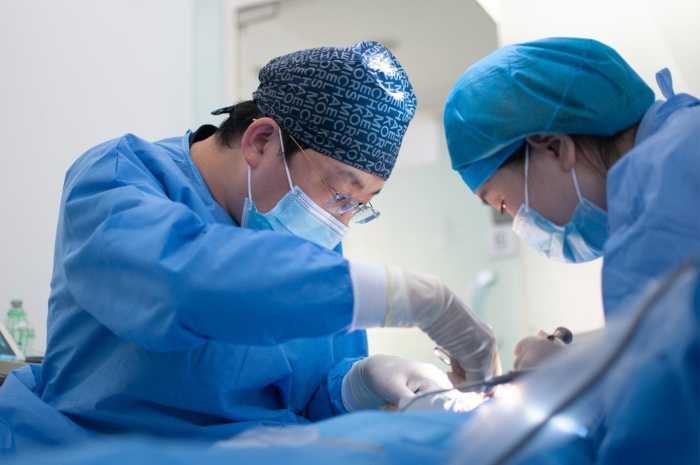Most of us heard that rhinoplasty has become a common procedure, actually the third on the U.S. list of the most demanded plastic surgeries. Therefore people can assume it is a simple and straightforward affair. Not that it is completely untrue, but you have to take into account that the surgery shows quite a high revision rate of 5 to 15%. 14% of the desirous are teenagers. Teenager or not, you would be well-advised to collect some pre-emptive knowledge related to nose reshaping before taking the plunge.
Leaf through before and after photos to see the job already done
Set your sights on an experienced surgeon and make sure you have chosen a real expert in facial cosmetic in general and rhinoplasty surgery in particular. Don’t hesitate to inquire about the range of your surgeon‘s experience.
Ask to be shown before and after photos of their former patients to acquire an idea of possible results and get an understanding of how your surgeon can tackle your case.
The perfect nose is an unattainable goal
What rhinoplasty is supposed to do is alter the shape of your nose, it won’t conjure up any new nose you would like to have. The perfect nose is a nice dream, but it is only a dream. Surgery deals with the shape, it can eliminate drooping and rectify crookedness; yet that is no guarantee you are going to get an absolutely awesome nose that you admire in a celebrity on a magazine cover.
Check your expectations for sensibility and consult your doctor about correcting your own features, without involving magic powers.
You just can’t have any guarantee about what result you will end up with. At the consultation you are likely to be shown a finished computer-generated appearance, but don’t place great reliance upon that. There are too many unpredictable factors like your genetics, the reaction of your tissues, the progress of healing.
For a week after the surgery, you will have a mummy-look
Bandaging is an essential part in recovery after rhinoplasty. Bones mustn‘t move about, swelling must be held in check; that means your nose will be mounted with a splint to be worn for a week or more. Things can turn out so that you may also need additional bandaging, a gauze layer for stopping drainage leaks from the nostrils for several days.

You will have to get accustomed to your new appearance
Don’t even begin to expect to see the accomplished appearance immediately. What there is to be seen varies from case to case; best chances are heavy bruising and swelling will meet your eye. There is likely to be a splint topping your nose.
But it shouldn’t be a cause to worry, this is only natural. You need your rest and some time to recuperation. Keep the head elevated, take anti-inflammatories, and the swelling is bound to begin diminishing almost straightaway, although the whole process may take about a week. Anything strenuous should be avoided during the following month (maybe longer).
Don’t hesitate to pelt your surgeon with questions
It pays to garner all sort of knowledge about the surgical procedure beforehand: whether the doctor believes surgery is the right answer, what technique is going to be employed, how many patients were satisfied with their results.
This is the way to make yourself certain that the selected doctor and the surgery are really what you need for a better look.

You need time off
Rhinoplasty is not something to be treated lightly; you can’t expect to turn up for your work or studies on the following day. You will stand in need of serious recuperation if you don’t want to spoil it all. Healing takes different time with different patients, allow for a sufficient free span for at least a week and maybe half a week over.
No one knows whether it has come off right
A well-performed nose job will leave you looking better than before. You will have your nose slightly altered so it can harmonize with your face better. People around should comment on your improved appearance and not judge your renewed nose alone.
No glasses or sunglasses to put pressure on the operated nose for six weeks post-op
As you know, healing takes time, and the bridge of your nose should better be left alone to heal properly. Glasses of all types are apt to exert unwelcome pressure and leave indentations, which is bad for healing. Therefore doctors tend to dicsourage their patients from wearing them for a month or longer after the splint is off. You can‘t do without glasses? Wear them over your splint or find a way to adhere the glasses to the brows so they won’t press down on your sensitive nose.
Consider non-surgical nose correction options
If you are bent on changing your nose permanently, rhinoplasty surgery does provide the answer; but if you need minor alterations, you can try dermal fillers that are designed to mend small bumps or rectify insignificant asymmetry. It can be accomplished very quickly without a long healing period, but it doesn’t guarantee a permanent effect.
Nonsurgical nose correction can be performed in a matter of minutes, gives no discomfort to speak of, requires minimal recovery time. You can rely on the results lasting for about a year. Maybe it would be worth your while to give it a try before you go for a big job.

Rhinoplasty can bring on temporary changes in your voice
According to experts, it is too rare a consequence to consider, yet it is quite possible: rhinoplasty might affect your voice slightly, especially if you were prone to speak nasally before. Then again, if your breathing influenced the tone of your voice to a great extent, the surgery can alter the intonation and color of your voice.
It’s important to be eligible for the surgery
To apply for nose correction you should be dissatisfied with how your nose looks on your face. But then, see that your expectations stay within realistic bounds and that you are flexible about the option. Run tests on your overall health to be sure that it will allow you to recover properly after the surgery, be ready to refrain from smoking for the healing period (or chuck it altogether!).
Allow for the necessity of revision
Even when rhinoplasty has been successful, a revision surgery might be required. It could transpire that something intervened in the healing process and some flaws remained in evidence. You can have revision surgery to do away with such flaws for good.











